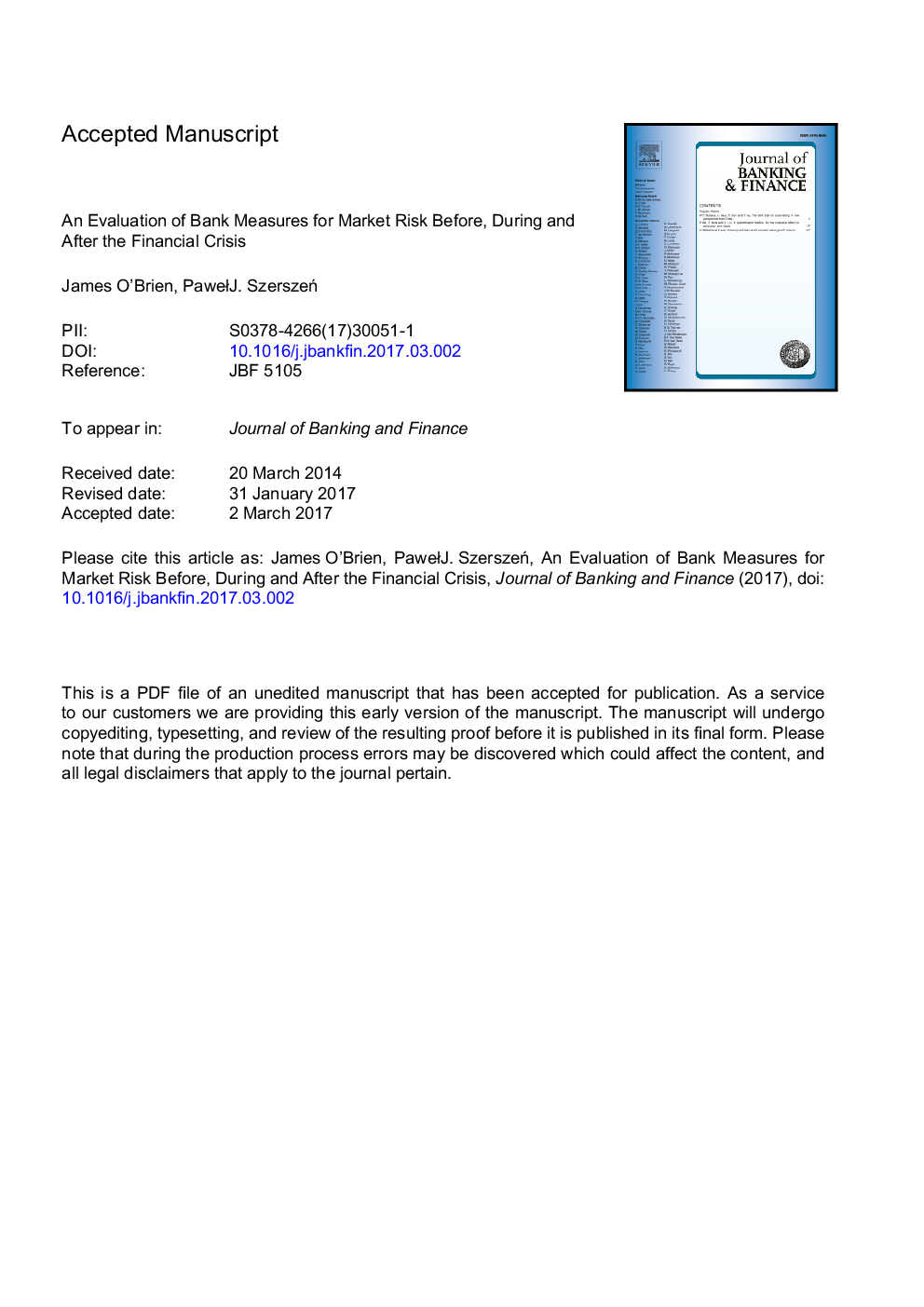| Article ID | Journal | Published Year | Pages | File Type |
|---|---|---|---|---|
| 5088101 | Journal of Banking & Finance | 2017 | 61 Pages |
Abstract
We study the performance and behavior of Value at Risk measures used by a number of large U.S. banks before, during and after the financial crisis. Alternative benchmark VaR measures, including GARCH-based measures, are estimated directly from the banks' trading revenues to explain the bank VaR performance results. While overly conservative in both the pre-crisis and post-crisis periods, bank VaR exceedances were excessive and clustered in the crisis period. This contrasted with mostly unbiased benchmark HS and GARCH VaRs in the pre-crisis and post-crisis periods, and vastly superior GARCH-based VaR performance in the crisis period with lower exceedance rates and no exceedance clustering. Our results document the bank VaRs very slow adjustment to changing market conditions and their systematic bias in all studied periods. Our results indicate that bank VaRs could be improved by the use of models with time-varying volatility, and built on banks' knowledge of their current positions.
Related Topics
Social Sciences and Humanities
Economics, Econometrics and Finance
Economics and Econometrics
Authors
James O'Brien, PaweÅ J. SzerszeÅ,
